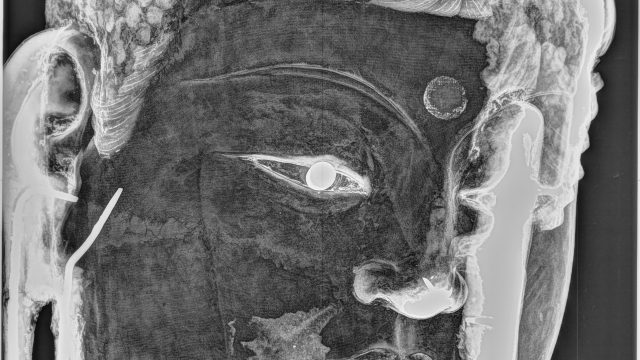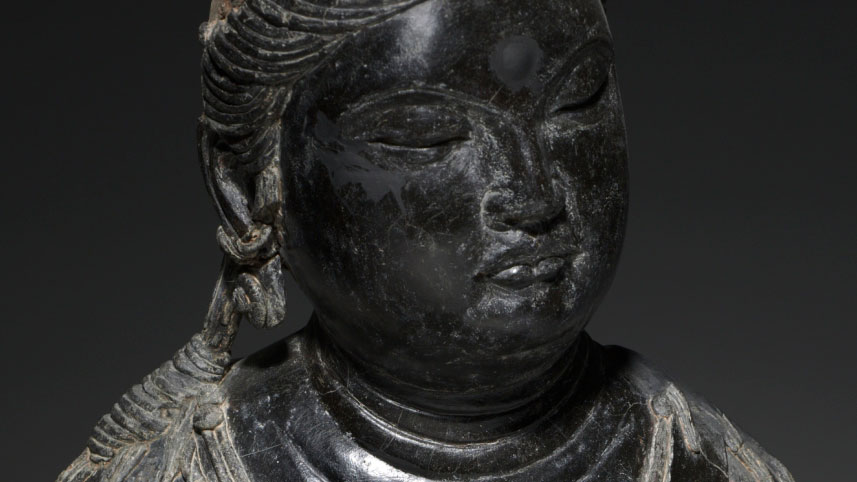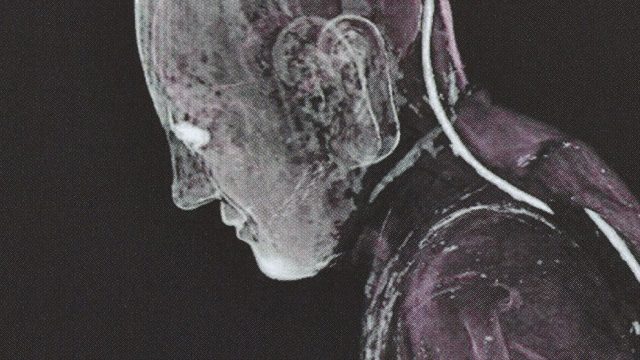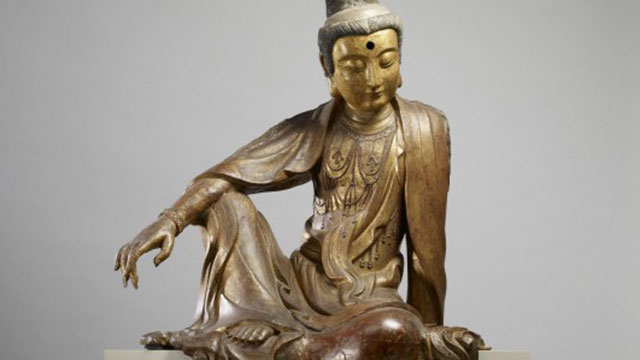Introduction
By Donna Strahan and Denise Patry Leidy
The Freer|Sackler has united for the first time the most important early Chinese lacquer buddha sculptures known to exist. In this online publication, we explore these sculptures in tandem with the exhibition Secrets of the Lacquer Buddha, on view from December 9, 2017, through June 10, 2018. Working from both art historical and scientific perspectives, Secrets of the Lacquer Buddha has given us an opportunity to determine how and of what these unique images were made. Together, they offer a holistic view of early Buddhist lacquer sculptures, demonstrating the complexity and sophistication of these works.
Unlike those crafted in stone, metal, or clay, Chinese Buddhist sculptures in lacquer are extremely rare. The three earliest-known examples, dating from the late sixth to the early seventh century, are all life-size and all in the United States. One is in the collection of the Walters Art Museum in Baltimore; a second is in the Freer Gallery of Art in Washington, DC; and the third is in the Metropolitan Museum of Art in New York. The Walters buddha is the earliest preserved example of a sculpture made using the wood-core lacquer technique. The Freer and Metropolitan buddhas are the earliest extant sculptures produced with the hollow-core lacquer technique.
In addition to these three late sixth- and seventh-century sculptures, we were able to study an eighth-century bodhisattva head from a private collection. This allowed us to compare the lacquer sculpture technique across three centuries. Together, the four sculptures also offer insights into the relationship between the use of lacquer as a sculptural medium and religious practice during this formative period in East Asian Buddhism.



 Construction from the Inside Out: Early Chinese Lacquer Buddha Fabrication
Construction from the Inside Out: Early Chinese Lacquer Buddha Fabrication Lacquer and Buddhist Sculpture in East Asia, Sixth–Eighth Century
Lacquer and Buddhist Sculpture in East Asia, Sixth–Eighth Century Lacquer, Relics, and Self-Mummification
Lacquer, Relics, and Self-Mummification Conclusion
Conclusion